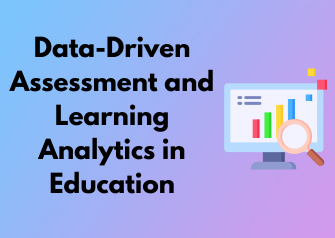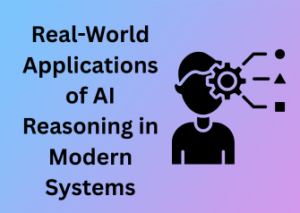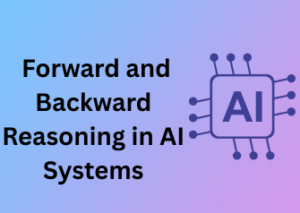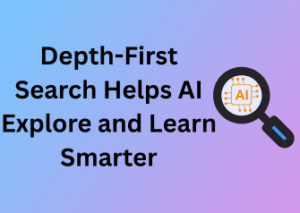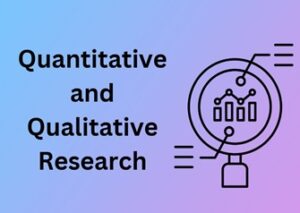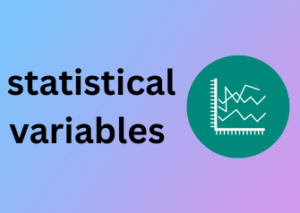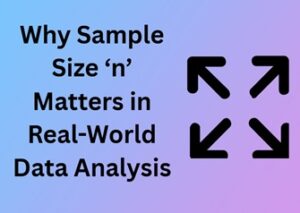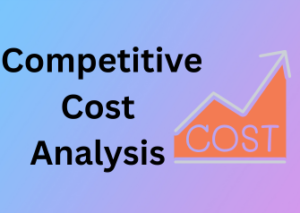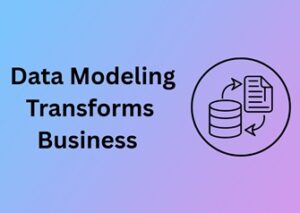A Brief History of Data in Education
Years ago, educational strategies were often built on intuition and traditional practices. Teachers relied on test scores, classroom observations, and their own instincts to gauge student progress, often with limited access to broader trends. While these methods were valuable, hey lacked the precision and customization that today’s data-driven insights offer.
The rise of digital tools and online learning platforms ushered in the era of educational data collection. Suddenly, every quiz completed online or every video lecture watched was a point of data waiting to be analyzed. What became clear was that this information could reveal patterns and behaviors not visible through conventional means.
The Power of Data-Driven Decision-Making
When educators know more, they can do more. Access to data allows schools to make informed decisions on a range of topics—from tailoring lessons for individual students to identifying systemic challenges across entire institutions. Here’s how:
- Tracking Student Progress: With real-time analytics, teachers no longer have to wait until the final exam to know if students are struggling. They can step in early, offering support where it’s needed most.
- Enhancing Curriculum Development: Data helps educators understand which teaching methods are working and which might need to be adjusted, ensuring that lesson plans evolve to meet modern demands.
- Closing Equity Gaps: By analyzing trends, schools can identify disparities in performance among different demographics, enabling targeted interventions to ensure no student is left behind.
Challenges Along the Way
While the opportunities are exciting, the evolution hasn’t been without its bumps in the road. One common challenge is ensuring that educators are equipped to interpret and act on the data they receive. Without proper training, numbers can quickly feel overwhelming or even misleading.
Additionally, integrating data tools seamlessly into existing workflows remains a hurdle for many schools. The learning curve for new technologies can be steep, and it’s important that teachers don’t feel burdened by systems meant to make their jobs easier.
How Learning Analytics Transforms Student Performance Metrics
Imagine being able to unlock the secrets to a student’s success with just a few clicks—or better yet, preventing them from falling behind before it becomes an issue. Sounds too good to be true? Not anymore! Thanks to the rise of learning analytics, education is becoming more insightful and student-centered than ever before.
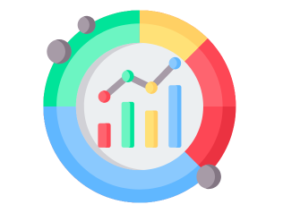
What Exactly Is Learning Analytics?
Let’s break it down in simple terms: learning analytics is the process of collecting, analyzing, and interpreting data about students and their learning behaviors. Think of it as combining Sherlock Holmes’ detective skills with the power of big data. This method goes far beyond traditional grades and attendance records; it dives deeper into patterns, progress, and potential.
For example, instead of just saying, “Jane is struggling with math,” learning analytics provides insights like: “Jane is having difficulty with quadratic equations specifically. She thrives in visual learning environments and performs best when given interactive practice.” See the difference? This actionable data paves the way for more meaningful interventions and guidance.
The Transformation Starts with Clear Metrics
Before jumping on the data train, schools and educators need a roadmap. Learning analytics transforms the messy heap of test scores, attendance logs, and assignment submissions into clear performance metrics. But how does this work in practice?
- Tracking Engagement: Platforms can measure how often a student logs into a learning platform, how much time they spend on material, and even which resources they engage with most.
- Identifying Trends: Analytics tools can flag issues like dwindling participation or declining scores before they spiral into major problems.
- Custom Performance Dashboards: Educators can access real-time dashboards that highlight individual and group performance. These dashboards empower teachers to make swift, evidence-based decisions.
How Does Learning Analytics Improve Student Outcomes?
Here’s where things get exciting! Learning analytics doesn’t just analyze—it drives actionable change. Let’s explore some of the ways it directly impacts student performance:
- Early Intervention: With predictive analytics, it becomes easier to identify at-risk students. Whether it’s emotional, academic, or environmental challenges, interventions can be tailored early on to offer targeted support.
- Boosting Motivation: Personalized feedback and gamified data visualization can encourage students to stay motivated. For example, showing them progress visuals motivates students to push forward.
- Maximizing Strengths: Learning analytics highlights areas where students excel, enabling educators to nurture those strengths and even challenge students with advanced material.
A Collaborative Effort
Though the magic of analytics lies in the numbers, it’s ultimately a team sport. Teachers, administrators, and even students themselves play crucial roles in implementing the changes derived from this data. Students gain more control over their learning (self-paced progress trackers, anyone?), while teachers shift from reactive to proactive approaches.
Pro Tip for Educators: Start small! You don’t need a full suite of fancy tools to embrace analytics. Begin with easy-to-use platforms capable of providing insights on class engagement or quiz performance. Every piece of data matters.
Real-Time Classroom Trends Through Smart Data Tools
In today’s rapidly evolving educational landscape, staying ahead of trends happening right now in the classroom is essential. Gone are the days of educators relying solely on test scores or end-of-term reports to gauge student progress. Thanks to smart data tools, teachers can now access real-time insights that help them adapt, respond, and enhance the learning experience as it unfolds. Let’s dive into why these tools matter and how they’re changing the game in classrooms everywhere!
Why Real-Time Data Matters
Imagine this: you’re teaching a lesson, and you notice a few confused faces in the back of the class. Traditionally, you might carry on with the lesson and address questions later. But what if you could receive immediate feedback that helps identify where students are struggling in real time? That’s exactly what smart data tools enable.
These tools collect and process data instantly — such as quiz results, participation metrics, and even engagement levels during digital activities. Real-time data allows educators to pinpoint issues and tweak their teaching methods on the spot, ensuring that no one falls behind. It’s like having a teaching assistant who gives you live updates on what’s working and what isn’t.
Examples of Smart Data Tools in Action
So, what do these tools actually look like in practice? Fortunately, the options are growing by the day. Here are just a few examples of how educators are leveraging technological innovation:
- Learning Management Systems (LMS): Platforms like Google Classroom or Canvas provide on-the-spot assessments, allowing teachers to view quiz results or assignment submissions as students complete them.
- Classroom Engagement Tools: Technologies like Kahoot! or Mentimeter let students interact in real-time through polls, quizzes, and feedback, showing immediate trends in comprehension or participation.
- Attendance & Participation Trackers: Tools that integrate with live sessions (think Zoom or Microsoft Teams) can measure student presence and engagement levels, giving teachers a window into who’s actively participating versus who might need extra encouragement.
Each of these solutions delivers valuable data insights without disrupting the natural flow of teaching. It’s the perfect blend of technology and traditional education.
Adapting Lessons Based on Real-Time Insights
Once educators gather data on classroom trends, the real magic happens: adaptation. When teachers spot patterns — say, 30% of the class struggling with a particular math concept — they can pivot their approach instantly. This might mean slowing down, providing additional examples, or grouping students who need extra help.
Not only does this improve learning outcomes, but it also makes classrooms far more dynamic. Lessons become iterative, evolving in response to student needs rather than rigidly following a pre-set plan. After all, who wants to be stuck teaching a one-size-fits-all curriculum when each classroom is brimming with unique individuals?
Overcoming Challenges
Of course, with any tech solution comes potential challenges. Teachers might worry about learning curves, balancing tech with face-to-face interaction, or how to navigate overwhelming amounts of data. The key is to start small. By implementing just one tool — like real-time polling or digital quiz platforms — educators can build confidence and see immediate benefits without feeling burdened.
Don’t forget: ongoing professional development makes all the difference. Many schools now offer training sessions to help staff get comfortable with these tools and make the most of their capabilities.
Real-Time Trends: The Future is Now
Ultimately, real-time classroom data isn’t just a passing trend; it’s the future of education. By harnessing the power of smart data tools, educators can create responsive, engaging, and inclusive learning environments that benefit every student. It’s an exciting time to be a part of this transformation, whether you’re teaching elementary schoolers or leveraging these advancements in higher education.
Personalized Learning: Matching Methods to Student Needs
Imagine walking into a classroom where every student isn’t just learning but thriving because the teaching methods are tailored specifically to their needs. Sounds amazing, right? This is the promise of personalized learning. By shifting away from a one-size-fits-all model, personalized education focuses on students as individuals—their strengths, weaknesses, and unique learning styles.
What is Personalized Learning?
In its simplest form, personalized learning is an approach that customizes the learning experience based on the individual needs and preferences of each student. It’s like a Spotify playlist, but for education—everything is curated to suit the learner’s pace, interests, and goals.
Here’s something to remember: it’s not just about adding tech tools to the mix. While technology helps immensely (more on that in a bit), the essence of personalized learning is understanding each student holistically—how they learn, what excites them, and where they struggle.

Why Does It Work?
Let’s face it, we’ve all been in situations where instruction feels either too advanced or too basic. That’s where personalized learning changes the game. By meeting learners where they are, it can:
- Boost engagement: Students are more motivated when their lessons align with their interests and goals.
- Build confidence: Tailored instruction minimizes frustration and allows students to experience small, consistent wins.
- Close gaps: Targeted support ensures struggling learners don’t fall behind while giving advanced learners room to grow.
Tools and Strategies for Personalization
You might be wondering, “Okay, this sounds great, but how do we actually make it happen?” Luckily, today’s classrooms are equipped with fantastic tools and strategies to make personalized learning a reality.
- Data-driven insights: Using student data is a key ingredient. Platforms like learning management systems (LMS) and adaptive learning software track performance, helping educators identify trends and address gaps.
- Student choice: Allowing students to choose their own projects, assignments, or goals fosters ownership of their education.
- Flexible pacing: Different students learn at different speeds. Technology such as self-paced online modules offers the flexibility they need.
- Blended learning: Combining online resources with in-person instruction ensures students get the best of both worlds.
- Regular feedback: Open, honest dialogue between teachers and students helps finetune personalized plans.
Common Challenges—and How to Overcome Them
Personalized learning sounds incredible, but let’s be realistic: it doesn’t come without challenges. For example, tailoring instruction for each student can feel like a daunting task. But here’s a tip: start small. Implement one or two personalized strategies first, then build as you grow more comfortable.
Another sticking point? Managing technology. It’s easy to assume that adding new tools will instantly work wonders, but they must be thoughtfully implemented. Begin with accessible, user-friendly platforms—ones your students and staff are comfortable navigating.
Why This Matters for the Future
At its core, personalized learning helps turn classrooms into vibrant environments where students aren’t just passive participants—they’re active, curious, and empowered learners. By investing in these methods, educators can create meaningful, lasting learning experiences that prepare students not only academically but also for life beyond the classroom. The real beauty of personalized learning is its adaptability—there’s no single “right way,” meaning it’s as flexible as your students need it to be.
Ethical Considerations in Educational Data Practices
Let’s be honest—data is everywhere these days, and education isn’t exempt. From tracking attendance to analyzing test scores and online learning habits, educators and institutions have access to information like never before. But as powerful as this data can be, there’s a bigger conversation that needs to happen: how do we use it responsibly?
Why Ethics Matter in Educational Data
At its core, educational data is about students—real, living, breathing people. When institutions collect, analyze, and apply that data, they’re making choices that directly impact students’ lives. Done well, this can open doors to better learning. Done poorly? It runs the risk of breaching privacy, reinforcing biases, or even harming student progress. That’s why ethical guidelines are not just “nice to have” but absolutely essential in shaping data-driven education.
Key Ethical Questions to Consider
Before diving headfirst into new technologies or analytical tools, educators and stakeholders need to ask themselves some important questions:
- Consent: Have students and their families provided informed consent for their data to be collected and analyzed?
- Transparency: Do all parties involved know what data is being gathered, why it’s being collected, and how it will be used?
- Limits: Are we collecting only the data that’s strictly necessary, or are we gathering information just because we can?
- Bias: Could the data—or how we’re interpreting it—be inadvertently perpetuating stereotypes or inequalities?
Ensuring that these questions are asked (and answered) ahead of time can drastically reduce the likelihood of ethical missteps.
The Privacy Piece
One of the most significant ethical challenges revolves around student privacy. In an age where schools lean on cloud storage, shared platforms, and third-party analytics tools, ensuring privacy can feel daunting. But it’s non-negotiable. Here are a few best practices:
- Limit access to sensitive information to only those who need it. No exceptions.
- Always opt for platforms and tools that offer data encryption and comply with privacy regulations like FERPA (in the U.S.), GDPR (in Europe), or local equivalents.
- Regularly audit your data systems to spot vulnerabilities or unnecessary data collection.
These simple steps can go a long way in creating trust between schools, educators, students, and parents.
Balancing Innovation with Caution
It’s tempting to rush headlong into every shiny, new tool promising groundbreaking insights. But ethical education practices require looking at the long-term impact, not just short-term gains. Bold ideas like artificial intelligence and predictive behavior algorithms hold immense promise, but without strict safeguards, they can lead to problems like student profiling or unintentional bias.
A Shared Responsibility
Ethics in educational data is not just the responsibility of IT teams, school administrators, or policymakers—it’s a team effort. Teachers, students, families, tech providers, and policymakers all have a role to play in ensuring responsible data use. Creating a culture where people feel comfortable voicing concerns and asking questions can make all the difference in spotting issues early on.
Empowering Educators with Practical Analytics Strategies
Hey there, educators! Let’s talk about something that might sound a little techy at first but is actually incredibly relevant to your everyday teaching life: analytics strategies. Yes, I know—when we hear the word “analytics,” our minds sometimes go straight to sterile spreadsheets or complex algorithms. But trust me, this topic is all about empowering you. So grab a coffee and let’s dive into how you can use practical analytics strategies to make your teaching not only easier but also far more impactful!
Why Analytics Matter for Modern Educators
First off, why even bother? Isn’t teaching already full of enough challenges without adding another skillset to the mix? Here’s the thing: data and analytics are already embedded in nearly every aspect of modern education. From attendance records to assessment scores, we’re swimming in data. But the sheer amount of it often feels overwhelming and, let’s be honest, not all that actionable.
That’s where practical analytics strategies come in. Instead of looking at data as a burden or something for “the math people,” think of it as a tool—a flashlight that can shine a light on the areas of teaching that are working well and the ones that might need a little tweaking. When approached correctly, analytics enable you to identify patterns, spot strengths, and address challenges in a more informed way. Essentially, they help you teach smarter, not harder, without compromising on the human side of education.
Getting Started: Keeping It Simple
You don’t need a PhD in statistics to adopt analytics strategies in your teaching. Here’s some advice for dipping your toes into the world of data:
- Focus on One Thing at a Time: Whether it’s tracking student progress or identifying who requires more support during lessons, start with a single goal in mind. For example, monitor how many students consistently complete their homework—this can tell you a lot about engagement.
- Use Tools You Already Have: Many schools already have software for grading or tracking attendance that can provide you with useful insights. Platforms like Google Classroom, for instance, offer basic analytics features that you can build on over time.
- Collaborate with Colleagues: Are other teachers in your department already using analytics? Ask them to share what’s worked for them. Sometimes, friendly collaboration can demystify data in ways no online tutorial ever could.
Advanced Analytics Strategies (But Still Practical!)
Once you’re comfortable with the basics, you can level up your strategy game by trying these methods:
- Analyze Behavior Patterns: Software like learning management systems often show metrics on student engagement, such as participation in online forums or time spent on assignments. Use these insights to identify students who might be struggling or excelling.
- Create Custom Benchmarks: Every classroom is unique. Work with your students to set attainable goals, and then use analytics to track progress over time. Celebrate small wins to keep morale high!
- Experiment with Feedback Loops: Once you start using certain strategies, track how well they’re working. Did attendance improve after you introduced a new style of lecture? Did test scores pick up after your last review session? Treat data as a conversation tool between you and your teaching methods.
Remember: Data Is Here to Support You, Not Replace You
Finally, a little pep talk: Analytics are tools for empowerment, not judgment. They aren’t there to tell you what you’re doing “right” or “wrong,” but to provide clarity where things might seem hazy. At the same time, trust your instincts as an educator. Numbers can only tell part of the story—you’re the one who understands the human context behind those numbers.
What’s Next for Data in Education?
In today’s tech-driven world, data plays a massive role in shaping educational landscapes. But what’s on the horizon for classrooms? Let’s dive into the exciting future trends that data is set to bring to tomorrow’s schools. From new classroom technologies to reimagined teacher-student dynamics, the possibilities are endless – and yes, they’re exciting!
1. Predictive Analytics for Proactive Interventions
Imagine a world where data doesn’t just react but predicts. Future classrooms will likely lean heavily on predictive analytics. These tools assess patterns in student learning to foresee challenges before they even happen. For example, if a student starts falling behind in math, predictive models can flag this early and recommend interventions like additional tutoring or tailored exercises. The result? Educators no longer have to wait until a student is visibly struggling—they can step in much earlier to provide support.
This isn’t just about grades; it’s about crafting an environment where every learner feels empowered, supported, and seen.
2. Gamified and Adaptive Learning Powered by Data
Let’s face it—traditional teaching methods can feel stale for some students. The use of data is already making strides in creating more personalized learning paths, and in the future, this will evolve alongside gamification. Imagine fully interactive platforms that adapt content difficulty and style based on a student’s comprehension level, while also including game-like rewards that boost motivation.
For instance, if a student excels in science but struggles with reading comprehension, their platform could adjust to present science content with clearer, simplified language. As students progress, the data collected from their performance ensures the system evolves accordingly.
Not only does this keep learning fresh and fun, but it also acknowledges that every child has a unique approach to the way they tackle challenges.
3. Data-Driven Parent Engagement
In the classrooms of the future, parents will no longer rely solely on report cards or occasional teacher meetings for insights into their child’s progress. Soon, platforms may deliver real-time data to parents, offering updates on everything from quiz scores to behavioral trends. Armed with this information, parents can collaborate more effectively with teachers and play an active role in their child’s education.
Think of it as a three-way partnership between educators, students, and parents—all made seamless with data acting as the connecting thread. The communication improvements could bridge gaps faster and build a sense of teamwork that’s hard to replicate otherwise.
4. AI in the Classroom
Artificial Intelligence might sound like the stuff of science fiction, but it’s quickly becoming an educational reality. Future classrooms are expected to use AI to analyze complex data sets, offering teachers insights they would never have time to unearth manually. AI-assisted tools could even help develop highly specific curriculums that cater to both classroom goals and individual student needs.
Perhaps we’ll see the rise of virtual teaching assistants who work hand-in-hand with educators, grading papers, or suggesting targeted resources for students. One thing’s for sure—AI could make teaching more efficient, giving educators more time to focus on human connections with their students.
What This All Means for Students and Teachers
So, how will all this tech translate to everyday life? The classrooms we imagine for tomorrow will be more inclusive, more adaptable, and more responsive than ever before. Data, when used effectively, ensures that no student is left behind and no teacher feels overwhelmed. Ultimately, this shared reliance on information fosters a learning culture rooted in growth—and it’s one that benefits everyone involved.

